Last night after supper, and after the sun ducked low enough so that the pines could provide shade, John and I finished cementing the stones together to complete the paths. The landscape fabric is down. We’ll haul pails of pebbles from the pile where the truck dumped them onto the pathways, but the hardest part of creating the garden is complete The hardscapes are in place. My dream of no longer weeding pathways is complete…or at least weeding them once every few weeks, instead of every weekend!
To celebrate, I found a picture of the original garden, taken April 2008. I had mapped out the paths that March using rocks. Do you see the little pink phlox planted on the hillside? That and a handful of daffodils were the only plants in place. The trellis at the entrance was added that month, too.
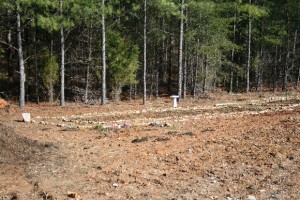 |
||
| Flower garden, April 2008 |
And now today, three years later –
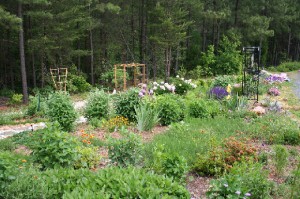 |
| Flower garden, May 2011…from a slightly different angle, but this is the same slope. |
Is a garden ever really finished? Do you ever put down the trowel and say, “Glad that’s over, now I can go back to watching reruns of the Andy Griffith Show on TV Land?”
We completed the main pathways this weekend. But we now plan to extend the pathway, clear a bit more into the woods, and I have already mentioned – loudly, repeatedly – that I want a huge statue of the Blessed Mother. I want to build her a grotto, actually, a la Lourdes. In my imagination, I see water splashing through a grotto or a rill. Maybe if I win the lottery and can afford some workers to dig it for me….!
But in all seriousness, gardens are never finished. My beautiful garden took three years to coax from the hard clay soil. It was so damaged from years of tobacco growing and pines…so acidic the laboratory who did the soil analysis called me and asked me where the soil came from (I’d taken the sample in Virginia but brought it back to where I was living in New York to have it tested; the poor lab guys wondered where the heck it came from!) It was so devoid of life I couldn’t find a single earthworm in the soil for years.
Today I watered the petunias with the garden hose and out hopped toads – several of them – a mad scramble of amphibians dancing under the hose. Mockingbirds, kinglets, goldfinches, hummingbirds and cardinals play among the flowers, landing on the larger bushes and on the trellis. Bees of all types hum among the flowers and butterflies are busy sipping nectar from the butterfly bushes.
I don’t have a magic touch and I don’t have a magic wand. I don’t spend hours out there every day, either. If I could tell you anything at all about gardening, it is this; nature is forgiving. Flowers add joy. Don’t hesitate to try something, anything, to get your garden growing! It is the most worthwhile thing in the whole wide world.
No, gardens are never done as long as there is a gardener who loves the garden.

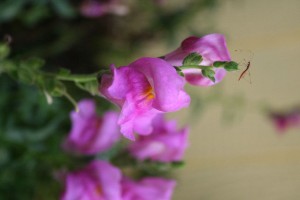
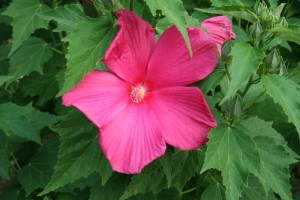



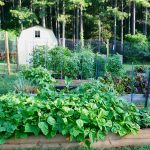
You have done an amazing job in such a short time! Looks wonderful! Virginia’s soils are naturally acidic and go back quickly even when limed pretty regularly. Was some of the soil in this garden sub-soil from the building of your house? Just curious. I continue to enjoy your blog.
Hi Liz,
Thanks for the kind words! The soil for the flower garden was not from digging the foundation of the house. It’s just beat to heck from so many years of growing tobacco. What really horrified me was the lack of insect life such as worms in it; it was so devoid of life. Now I am glad to see the wrigglers happily under the mulch and what I believe is a good, healthy little ecosystem going on there. Thanks for posting your comment!